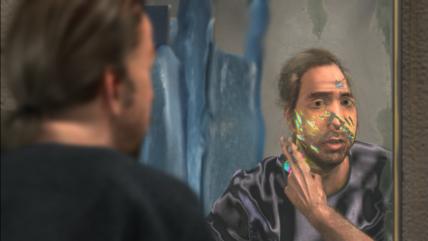Do any of you clever folk have an idea how to set up this scene?
In the image is the standin puppet for Sabela — a very early WIP who I use for test walk cycles, and lighting, etc while the other puppet is getting ready for the scene. Wow, that sounds silly — basically Sabela’s right thumb broke off, and I am replacing it.
The graphics are also temporary; I am still playing around with fonts!
Anyway, I need to figure out a way to a) cut this cabbage leaf as though Sabela is cutting it with scissors, and b) have the cut-off pieces fall into the soup pot. So my dilemma is — do I pre-cut the leaves and then stick the pieces together with something easy to take apart, so that it appears she is cutting them? Touching up the seams in post? Or do I use an X-acto or something to cut while she is cutting with her “scissors?” (The leaf is very tiny, by the way — about 1″ x 2”, and made of paper coated with acrylic, so not that easy to cut.)
Also — the pieces that fall. The only solution I can think of is to put a thread there, vertically, coming out of the pot, to link to the leaf… but it would limit her movements so much, as the work area is so tiny, and there’s not a lot of room to maneuver there as it is.
Sigh, any brilliant suggestions?




